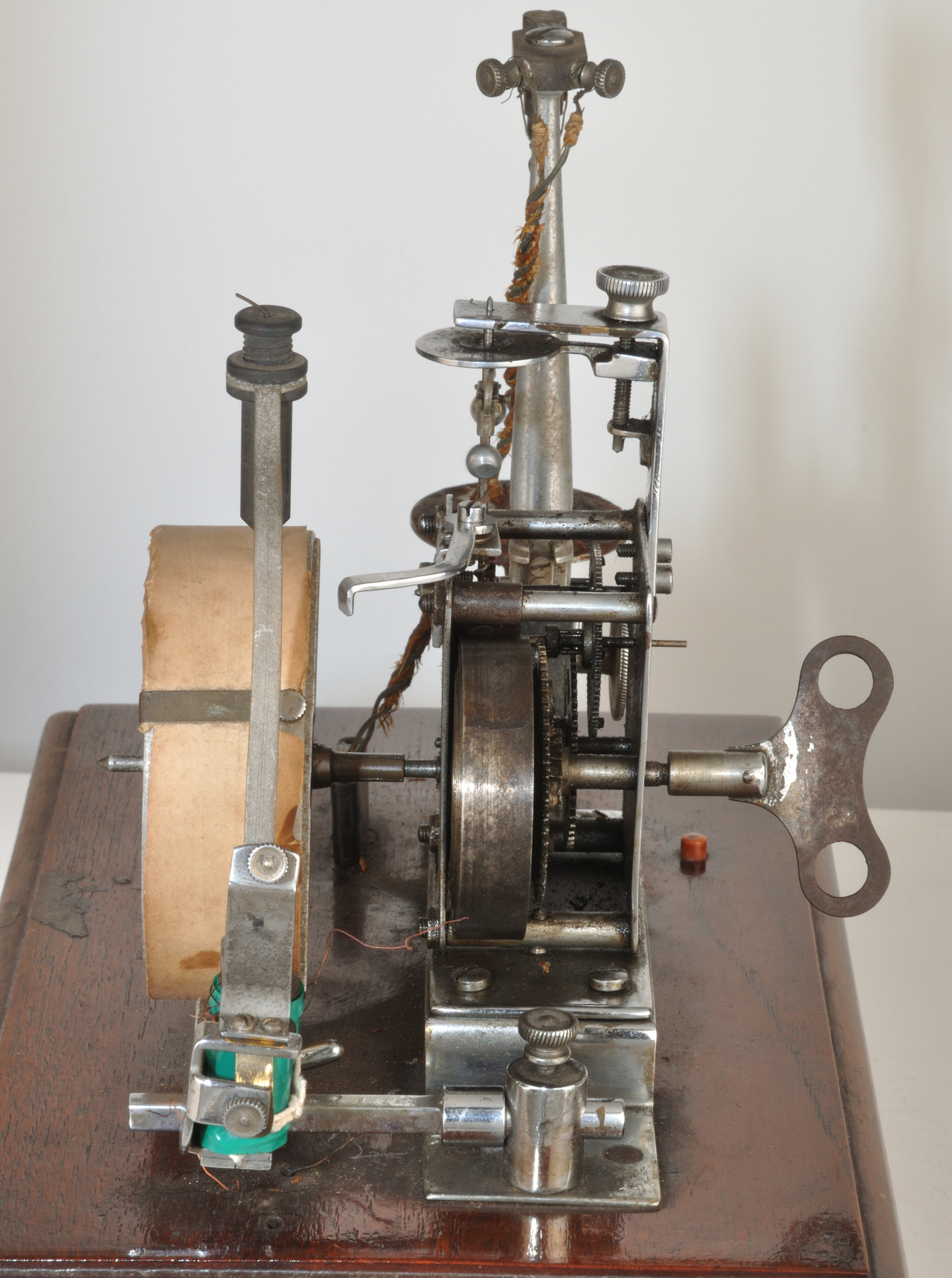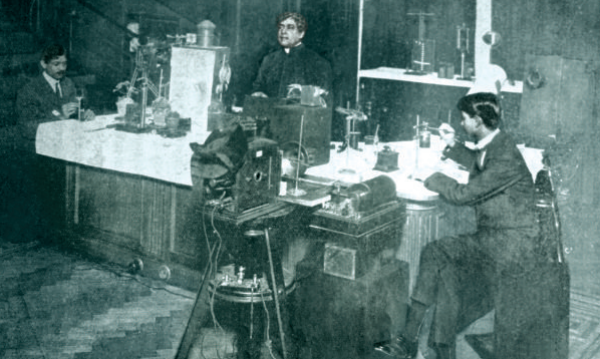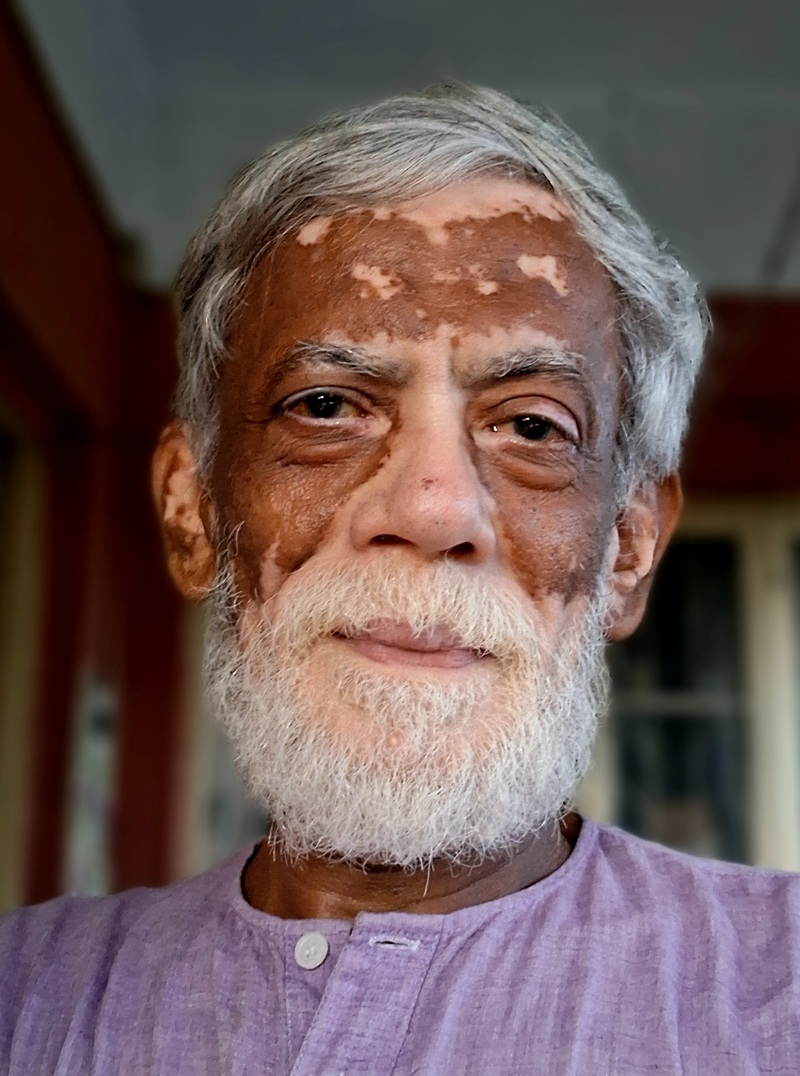
From Waves To Leaves: Story of the First Biophysicist
Early Research in Electromagnetic Waves
The scientific pursuits of Jagadish Chandra Bose, a pioneer of Indian science, often shifted directions. In the very beginning, his research focused on electromagnetic waves. In 1895—ten years after he had joined Presidency College in 1885—he published his first research paper in the Journal of the Asiatic Society, on the subject of the polarization of electric waves. Following this, he published five more papers on the same topic, and in 1897, his lecture at the Royal Institution in London instantly established him as one of the world’s foremost scientists. Thus began the scientific journey of Jagadish Chandra Bose, the trailblazer of Indian science.
Shift to Comparative Studies of Matter and Life
But soon that journey took a major turn. From 1895 to 1899, although he gained fame as a pure physicist working on electromagnetic waves, between 1900 and 1906 his research shifted to a comparative study of the responses of inanimate (metals) and animate (plants) matter under electrical and mechanical stimulation. During this period, his imaginative theory or hypothesis was that there is no fundamental difference between the inanimate and the living. At this time, he threw himself into experiments to prove his hypothesis.
In his own words [1]: “At that time, I was investigating the electric waves of the atmosphere and had succeeded in inventing and constructing a new instrument for recording messages transmitted from a distance. I observed that the writing of the instrument made of metal became weaker and weaker, as if the instrument were becoming exhausted … Just as human fatigue is relieved by rest, the fatigue of the instrument also disappeared after rest. Again, just as certain drugs stimulate us, I found a similar process occurring in the instrument made of inanimate matter… From this, I came to understand that the inanimate and the living worlds are governed by the same laws and are bound together by the same principles.”
But in his thinking—that is, in drawing correct conclusions through data analyses— there was a flaw. He had accepted the post-stimulus electrical response of inanimate matter as a sufficient criterion of life. But here, the distinction between “sufficient” and “necessary,” which appear similar yet are actually quite different, required precise application—a distinction he failed to make. Electrical response is certainly a necessary condition for life. But it is never a sufficient one. Unless several other conditions are also satisfied, the mere presence of electrical response does not allow one to classify inanimate matter as living.
Philosophical Influences and Scientific Isolation
It is worth noting here that during this period Jagadish Chandra had the companionship of Nivedita and Rabindranath Tagore. Inspired by Vivekananda, Nivedita held an unwavering belief in Advaita philosophy, while Tagore emphasized the relevance of ancient Indian idealist thought as an alternative to Western rationalism. These influences, perhaps—even if only momentarily—blinded the scientist [2].
As a result, he reached a stage in his scientific career where Western science journals, raising various objections, almost stopped publishing his papers on this subject. Yet he did not stop his research. Encouraged and in large part assisted by Nivedita, he began publishing his research findings in the form of books. But books, unlike journal articles, were not validated by contemporary experts actively working in the same field. Consequently, his work of that period gradually became separated from the mainstream current of science.

Emergence as the First Biophysicist
However, this phase did not last long. He then entered a new chapter of scientific research (1907–1935)—one that was not only new for him but also an entirely fresh chapter in the history of world science: Biophysics. A letter he wrote to his friend Patrick Geddes (24 January 1917) is noteworthy, in which he said: “I do not belong to any particular camp—the physicists think I have abandoned physics and joined the botanists; the botanists again think I am a physiologist, and so on. However, the Royal Society is very kind in publishing my papers. Though, when I send them several at once, they are somewhat embarrassed, and as a result some of my papers remain unpublished.”
During this time, the central focus of his work was plant electrophysiology: the minute responses of plants to various forms of stimulation and their growth (his famous instrument, the crescograph, was developed during this period), the absorption of water by plants and its transmission from roots to great heights, the nervous system of plants, and plant intelligence. While much has been written about his scientific contributions in this period, there is one aspect of his work that has received very little discussion—Jagadish Chandra Bose’s contribution to photosynthesis research.
In 1923, he published a paper on this topic in Nature [4]. There he wrote: “The possibility of ultra-measurable traces of certain chemical substances affecting assimilation is a matter of much importance in physiology. The carbon-assimilation of water-plants affords an extremely sensitive process for the investigation of the subject. The usual method of counting the number of bubbles of oxygen given out by the plant under light is, however, most untrustworthy for quantitative determinations, since the size and frequency of the bubbles undergo spontaneous variation. This difficulty has been completely removed by a new device which I have been able to perfect, by which the evolution of equal volumes of oxygen is automatically recorded on a revolving drum by an electromagnetic writer; records thus obtained enable us to determine the normal rate of photosynthesis and its induced variations. I have also found that there is a definite relation between the evolution of oxygen and the formation of carbohydrate in the leaf. The automatic apparatus referred to can be so adjusted that the successive dots in the record represent the photosynthetic production of amounts of carbohydrate as small as a millionth of a gram. It is impossible in this short communication to give a detailed account of the apparatus, which will be found fully described in my forthcoming work, “The Physiology of Photosynthesis,” to be published by Messrs. Longmans.”
The book The Physiology of Photosynthesis [5] was published in 1924 by Longmans, Green & Co. Why did Jagadish Chandra suddenly immerse himself in photosynthesis research? The answer is clear from the preface of the book, where he wrote: “It would appear, therefore, that almost everything that can be known about photosynthesis has now been ascertained. It may be admitted that this is approximately true in the qualitative sense, but certainly not in the quantitative sense. The present volume is essentially a record of quantitative research in these various directions”

In other words, while information on this subject had been understood largely in a qualitative way up to that point, as a physicist he sought to present it quantitatively. In the book, the words “quantitative” and “qualitative” were printed in italics. And here lies the key to his mindset as a researcher. At that time, biology was approached mainly from a qualitative perspective, whereas physics was grounded in a quantitative one.
This was the contribution of the world’s first biophysicist.

The book contains a total of 25 chapters. In the first chapter, he described the instrument he invented for measuring photosynthesis-induced bubbles (the Photosynthetic Bubbler), in which oxygen bubbles of varying size accumulate inside a closed container and generate air pressure. Once that pressure crossed a certain threshold, it produced an electrical signal, which was transmitted to an automatic recorder. This recorder could also measure time—the interval between two successive signals. In other words, by measuring the time taken for equal amounts of oxygen to be released, it became possible to determine the quantitative rate of the underlying biological process (in this case, photosynthesis). In other words, the instrument could accurately measure how quickly a plant released equal volumes of oxygen. Though simple, the device was undeniably innovative. Unfortunately, even today in Indian colleges, students are still taught to count oxygen bubbles released by plants, while Bose’s Photosynthetic Bubbler remains unused. Had it been otherwise, the Bose Photosynthetic Bubbler might not have remained so obscure.

Major Findings and Innovations
After the first four chapters, describing the apparatus and the precautions required during experiments, the next nine chapters recorded experiments using this device: the effect of increased light intensity on photosynthesis (Ch. 5), the relationship between light quantity and photosynthesis (Ch. 6), physiological factors in photosynthesis (Ch. 7), changes in photosynthesis under stimulants, anaesthetics, and poisons (Ch. 8), the effect of infinitesimal amounts of chemical substances on photosynthesis (Ch. 9), the electric response to light (Ch. 10), the initiation of photosynthesis when plants are transferred from darkness to light (Ch. 11), the effect of continuous light on photosynthesis (Ch. 12), the role of carbon dioxide supply (Ch. 15), and oxygen production in the complete absence of carbon dioxide (Ch. 16).
Bose demonstrated that the aquatic plant Hydrilla stopped photosynthesis in winter (neutral pond water) in absence of CO2 but in summer (acidic pond water) they continued to evolve oxygen in the complete absence of any supply of CO2. The discovery of this quite new pathway later turned out to be the C-4 pathway (now the well-known Hatch & Slack Pathway). Further, this unique pathway turned out to be an example of non-Kranz single cell C4-pathway, operating in aquatic angiosperms.
With slight modifications to the original bubbler, he described further experiments across four chapters: the effect of temperature variation on photosynthesis (Ch. 17), the influence of season and stimulus (Ch. 18), diurnal changes in photosynthesis (Ch. 19), and the efficiency of photosynthesis under different colors of light (one of the earliest photosynthesis action spectrum) (Ch. 20).
The book also introduced several new instruments. Chapter 10 described work on the electrical response of plants to light using a photoelectric cell. Chapter 13 explained the construction of an automatic radiograph with a selenium cell. Chapter 14 introduced a new electrical photometer for measuring light intensity.
In addition, many other kinds of work were recorded: the determination of energy distribution across different wavelengths of the solar spectrum using a magnetic radiometer and carbon disulfide prism (Ch. 21), the efficiency of spectral rays in photosynthesis (Ch. 22), the measurement of weight increase in plants due to photosynthesis using a torsion balance (Ch. 23), the simultaneous measurement of sugar production in plants during photosynthesis using two independent methods—a torsion balance and a chemical balance (Ch. 24). Finally, the efficiency of photosynthesis in storing solar energy was measured using another innovative device (Ch. 25).

Legacy and Global Recognition
The sheer volume of research contained in this one book is so great that it could easily provide the material for four or five PhD dissertations. But what about the quality of the research? For that, let us listen to a specialist in photosynthesis. According to Professor Govindjee, a pioneer in photosynthesis research (particularly Photosystem II) and Emeritus Professor of Biochemistry, Biophysics, and Plant Biology at the University of Illinois at Urbana–Champaign [6]: “Sir J. C. Bose made some remarkable observations on the physiological aspects of photosynthesis. While measuring the dependence of photosynthesis in the aquatic plant Hydrilla on external agents [carbon dioxide], he discovered in 1924 that during summer the efficiency of photosynthesis was not only much higher than in winter, but that the plants also produced malic acid (malate), which supplied carbon dioxide for photosynthesis; thus, no external carbon dioxide was required. This newly discovered pathway was later proved to be the C-4 pathway (now well known as the Hatch and Slack pathway). Moreover, this unique pathway turned out to be an example of the non-Kranz, single-cell C-4 pathway functioning in aquatic angiosperms. He also discovered another phenomenon: the stimulatory effect of nitric acid on photosynthesis.”
It is noteworthy that almost thirty years after Bose’s work, in 1960, Karpilov was able to trace radioactive carbon atoms into malate and aspartate molecules in maize leaves—work that Hatch and Slack later used, in 1966, to describe the C4 photosynthetic pathway in sugarcane leaves. Thus, Govindjee has no hesitation in declaring: “Therefore, Jagadish Chandra Bose was not only a pioneer of photosynthesis research in India but also one of its pioneers worldwide.”
Summary
In the 1920s, Jagadish Chandra Bose turned to photosynthesis, publishing The Physiology of Photosynthesis (1924), a 25-chapter monograph. He devised the Photosynthetic Bubbler, an innovative instrument that enabled precise, quantitative measurement of oxygen release during photosynthesis, overcoming the limitations of simple bubble-counting methods. Using this and other novel devices, Bose investigated the effects of light intensity, wavelength, temperature, seasonal and diurnal changes, as well as chemical stimulants and inhibitors. His most significant finding was that Hydrilla plants produced malic acid to supply internal CO₂ for photosynthesis—an early recognition of the C4 pathway, decades before Hatch and Slack’s 1966 discovery. He also observed the stimulatory effect of nitric acid on photosynthesis. Modern scholars, including Govindjee, regard Bose as not only a pioneer in India but also a global trailblazer in photosynthesis research.
References
- Acharya Jagadish Chandra Bose (1958), Jagadish Chandra Bose Centenary Celebration Committee (Ed. Charuchandra Bhattacharya).
- Sudipto Das and Gautam Basu (2025) Nivedita and Jagadish Chandra Bose: A Reading of Mutual Travel and Influence. A New Journey: An Anthology of Interdisciplinary Studies and Research (Eds. Bula Bhadra and Chandni Basu) pp 37 -59, Sister Nivedita University, Kolkata.
- Patrick Geddes Collection, University of Edinburgh Archive and Manuscript Collections, Edinburgh.
- Bose, J. C. (1923) Effect of infinitesimal Traces of Chemical Substances on Photosynthesis. Nature, 112: 95-96.
- Bose, J. C. (1924) The Physiology of Photosynthesis. Longmans, Green & Co., London.
- (a) Raghavendra, A.S. and Govindjee ( 2011). Sir Jagadish Chandra Bose (1858–1937): A Pioneer in Photosynthesis Research and Discoverer of Unique Carbon Assimilation in Hydrilla. In: C4 Photosynthesis and Related CO 2 Concentrating Mechanisms. Advances in Photosynthesis and Respiration, volume 32, pp 3-11, Springer, Dordrecht. (b) Govindjee personal communications.
